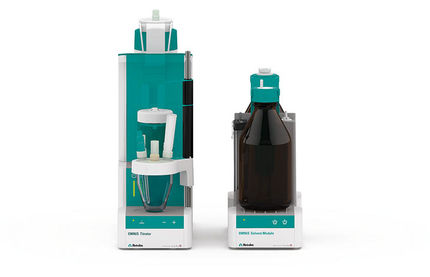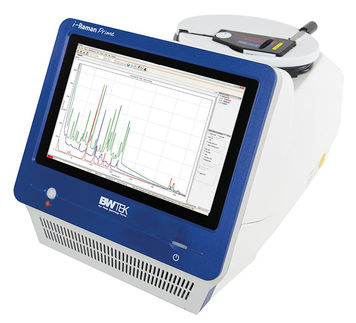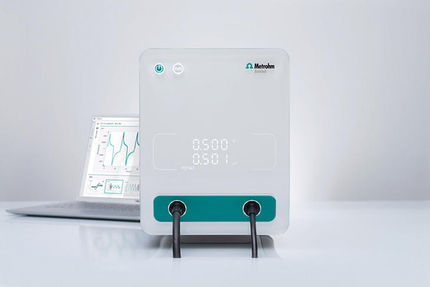| Rhodopsin-like receptors
|
| Identifiers
|
| Symbol
| 7tm_1
|
| Pfam
| PF00001
|
| InterPro
| IPR000276
|
| SCOP
| 1f88
|
| OPM family
| 6
|
| OPM protein
| 1gzm
|
| Available PDB structures:
1U19 2R4R 2R4S 2RH1 1f88, 1hzx, 1l9h, 2g87, 2hpy, 2i35, 2i36, 2i37, 2j4y, 2ped
|
Rhodopsin-like receptors are the largest group of G-protein coupled receptors.
G-protein-coupled receptors, GPCRs, constitute a vast protein family that encompasses a wide range of functions (including various autocrine, paracrine and endocrine processes). They show considerable diversity at the sequence level, on the basis of which they can be separated into distinct groups. GPCRs are usually described as "superfamily" because they embrace a group of families for which there are indications of evolutionary relationship, but between which there is no statistically significant similarity in sequence.[1] The currently known superfamily members include the rhodopsin-like GPCRs, the secretin-like GPCRs, the cAMP receptors, the fungal mating pheromone receptors, and the metabotropic glutamate receptor family. There is a specialised database for GPCRs: http://www.gpcr.org/7tm/.
The rhodopsin-like GPCRs themselves represent a widespread protein family that includes hormone, neurotransmitter and light receptors, all of which transduce extracellular signals through interaction with guanine nucleotide-binding (G) proteins. Although their activating ligands vary widely in structure and character, the amino acid sequences of the receptors are very similar and are believed to adopt a common structural framework comprising 7 transmembrane (TM) helices.[2][3][4]
Rhodopsin-like GPCRs have been classified into the following 19 subgroups (A1-A19) based on a phylogenetic analysis.[5]
Subfamily A1
- Chemokine receptor IPR000355
- Chemokine (C-C motif) receptor 1 (CCR1, CKR1)
- Chemokine (C-C motif) receptor 2 (CCR2, CKR2)
- Chemokine (C-C motif) receptor 3 (CCR3, CKR3)
- Chemokine (C-C motif) receptor 4 (CCR4, CKR4)
- Chemokine (C-C motif) receptor 5 (CCR5, CKR5)
- Chemokine (C-C motif) receptor 8 (CCR8, CKR8)
- Chemokine (C-C motif) receptor-like 2 (CCRL2, CKRX)
- chemokine (C motif) receptor 1 (XCR1, CXC1) IPR005393
- chemokine (C-X3-C motif) receptor 1 (CX3CR1, C3X1) IPR005387
- GPR137B (GPR137B, TM7SF1)
Subfamily A2
- Chemokine receptor IPR000355
- Chemokine (C-C motif) receptor-like 1 (CCRL1 CCRL1, CCR11)
- Chemokine (C-C motif) receptor 6 (CCR6, CKR6)
- Chemokine (C-C motif) receptor 7 (CCR7, CKR7)
- Chemokine (C-C motif) receptor 9 (CCR9, CKR9)
- Chemokine (C-C motif) receptor 10 (CCR10, CKRA)
- CXC chemokine receptors IPR001053
- Chemokine (C-X-C motif) receptor 6 (CXCR6, BONZO)
- Chemokine (C-X-C motif) receptor 7 (CXCR7, RDC1) IPR001416
- Interleukin-8 IPR000174 (IL8R)
- IL8R-α (IL8RA, CXCR1)
- IL8R-β (IL8RB, CXCR2)
- Adrenomedullin receptor (GPR182)
- Duffy blood group, chemokine receptor (DARC, DUFF)
- G Protein-coupled Receptor 30 (GPER, CML2, GPCR estrogen receptor)
Subfamily A3
- Angiotensin II receptor IPR000248
- Angiotensin II receptor, type 1 (AGTR1, AG2S)
- Angiotensin II receptor, type 2 (AGTR2, AG22)
- Apelin receptor (AGTRL1, APJ) IPR003904
- Bradykinin receptor IPR000496
- Bradykinin receptor B1 (BDKRB1, BRB1)
- Bradykinin receptor B2 (BDKRB2, BRB2)
- GPR15 (GPR15, GPRF)
- GPR25 (GPR25)
Subfamily A4
- Opioid receptor IPR001418
- Somatostatin receptor IPR000586
- Somatostatin receptor 1 (SSTR1, SSR1)
- Somatostatin receptor 2 (SSTR2, SSR2)
- Somatostatin receptor 3 (SSTR3, SSR3)
- Somatostatin receptor 4 (SSTR4, SSR4)
- Somatostatin receptor 5 (SSTR5, SSR5)
- GPCR neuropeptide receptor IPR009150
- Neuropeptides B/W receptor 1 (NPBWR1, GPR7)
- Neuropeptides B/W receptor 2 (NPBWR2, GPR8)
- GPR1 orphan receptor (GPR1) IPR002275
- DEZ orphan receptor IPR002258
Subfamily A5
- Galanin receptor IPR000405
- Galanin receptor 1 (GALR1, GALR)
- Galanin receptor 2 (GALR2, GALS)
- Galanin receptor 3 (GALR3, GALT)
- Cysteinyl leukotriene receptor IPR004071
- Cysteinyl leukotriene receptor 1 (CYSLTR1)
- Cysteinyl leukotriene receptor 2 (CYSLTR2)
- Leukotriene B4 receptor IPR003981
- Leukotriene B4 receptor (LTB4R, P2Y7)
- Leukotriene B4 receptor 2 (LTB4R2)
- Relaxin receptor IPR008112
- Relaxin/insulin-like family peptide receptor 1 (RXFP1, LGR7)
- Relaxin/insulin-like family peptide receptor 2 (RXFP2, GPR106)
- Relaxin/insulin-like family peptide receptor 3 (RXFP3, SALPR)
- Relaxin/insulin-like family peptide receptor 4 (RXFP4, GPR100/GPR142)
- KiSS1-derived peptide receptor (GPR54) (KISS1R) IPR008103
- Melanin-concentrating hormone receptor 1 (MCHR1, GPRO) IPR008361
- Urotensin-II receptor (UTS2R, UR2R) IPR000670
Subfamily A6
- GPR40-related receptor IPR013312
- Free fatty acid receptor 1 (FFAR1, GPR40)
- Free fatty acid receptor 2 (FFAR2, GPR43)
- Free fatty acid receptor 3 (FFAR3, GPR41)
- GPR42 (GPR42, FFAR1L)
- P2 purinoceptor IPR002286
- Purinergic receptor P2Y1 (P2RY1)
- Purinergic receptor P2Y2 (P2RY2)
- Purinergic receptor P2Y4 (P2RY4)
- Purinergic receptor P2Y6 (P2RY6)
- Purinergic receptor P2Y11 (P2RY11)
- GPR31 (GPR31, GPRV)
- GPR81 (GPR81)
- GPR82 (GPR82)
- GPR109B (GPR109B, HM74)
- Oxoglutarate (alpha-ketoglutarate) receptor 1 (OXGR1, GPR80)
- Succinate receptor 1 (SUCNR1, GPR91)
Subfamily A7
- P2 purinoceptor IPR002286
- Purinergic receptor P2Y5 (P2RY5, P2Y5) IPR002188
- Purinergic receptor P2Y10 (P2RY10, P2Y10)
- Protease-activated receptor IPR003912
- Coagulation factor II (thrombin) receptor-like 1 (F2RL1, PAR2)
- Coagulation factor II (thrombin) receptor-like 2 (F2RL2, PAR3)
- Epstein-Barr virus induced gene 2 (lymphocyte-specific G protein-coupled receptor) (EBI2)
- GPR4 (GPR4) IPR002276
- GPR17 (GPR17, GPRH)
- GPR18 (GPR18, GPRI)
- GPR20 (GPR20, GPRK)
- GPR23 (GPR23, P2RY9, P2Y9)
- GPR35 (GPR35)
- GPR55 (GPR55)
- GPR65 (GPR65) IPR005464
- GPR68 (GPR68) IPR005389
- GPR92 (GPR92)
- GPR132 (132, G2A) IPR005388
- Coagulation factor II receptor (F2R, THRR)
Subfamily A8
- P2 purinoceptor IPR002286
- Purinergic receptor P2Y12 (P2RY12)
- Purinergic receptor P2Y13 (P2RY13, GPR86) IPR008109
- Purinergic receptor P2Y14 (P2RY14, UDP-glucose receptor, KI01) IPR005466
- GPR34 (GPR34)
- GPR87 (GPR87)
- GPR171 (GPR171, H963)
- Platelet-activating factor receptor (PTAFR, PAFR) IPR002282
Subfamily A9
- Cannabinoid receptor IPR002230
- Cannabinoid receptor 1 (brain) (CNR1, CB1R)
- Cannabinoid receptor 2 (macrophage) (CNR2, CB2R)
- Lysophosphatidic acid receptor IPR004065
- Endothelial differentiation gene 2 (EDG2)
- Endothelial differentiation gene 4 (EDG4)
- Endothelial differentiation gene 7 (EDG7)
- Sphingosine 1-phosphate receptor IPR004061
- Endothelial differentiation gene 1 (EDG1)
- Endothelial differentiation gene 3 (EDG3)
- Endothelial differentiation gene 5 (EDG5)
- Endothelial differentiation gene 6 (EDG6)
- Endothelial differentiation gene 8 (EDG8)
- Melanocortin/ACTH receptor IPR001671
- Melanocortin 1 receptor (MC1R, MSHR)
- Melanocortin 3 receptor (MC3R)
- Melanocortin 4 receptor (MC4R)
- Melanocortin 5 receptor (MC5R)
- ACTH receptor (MC2R), ACTR)
- GPR3 (GPR3)
- GPR6 (GPR6)
- GPR12 (GPR12, GPRC)
Subfamily A10
- Opsins IPR001760[6]
- Rhodopsin (RHO, OPSD)
- Opsin 1 (cone pigments), short-wave-sensitive (color blindness, tritan) (OPN1SW, OPSB) (blue-sensitive opsin)
- Opsin 1 (cone pigments), medium-wave-sensitive (color blindness, deutan) (OPN1MW, OPSG) (green-sensitive opsin)
- Opsin 1 (cone pigments), long-wave-sensitive (color blindness, protan) (OPN1LW, OPSR) (red-sensitive opsin)
- Retinal G protein coupled receptor (RGR)
- Retinal pigment epithelium-derived rhodopsin homolog (RRH, OPSX) (visual pigment-like receptor opsin) IPR001793
Subfamily A11
- Eicosanoid receptor IPR008365
- Prostaglandin D2 receptor (PTGDR, PD2R)
- Prostaglandin E1 receptor (PTGER1, PE21)
- Prostaglandin E2 receptor (PTGER2, PE22)
- Prostaglandin E3 receptor (PTGER3, PE23)
- Prostaglandin E4 receptor (PTGER4, PE24)
- Prostaglandin F receptor (PTGFR, PF2R)
- Prostaglandin I2 (prostacyclin) receptor (PTGIR, PI2R)
- Thromboxane A2 receptor (TBXA2R, TA2R)
Subfamily A12
- Cholecystokinin receptor IPR009126
- Cholecystokinin A receptor (CCKAR, CCKR)
- Cholecystokinin B receptor (CCKBR, GASR)
- Neuropeptide FF receptor IPR005395
- Neuropeptide FF receptor 1 (NPFFR1, FF1R)
- Neuropeptide FF receptor 2 (NPFFR2, FF2R)
- Orexin receptor IPR000204
- Hypocretin (orexin) receptor 1 (HCRTR1, OX1R)
- Hypocretin (orexin) receptor 2 (HCRTR2, OX2R)
- Vasopressin receptor IPR001817
- Gonadotrophin releasing hormone receptor (GNRHR, GRHR) IPR001658
- GPR22 (GPR22, GPRM)
- GPR103 (GPR103)
- GPR176 (GPR176, GPR)
Subfamily A13
- Melatonin receptor IPR000025
- Melatonin receptor 1A (MTNR1A, ML1A)
- Melatonin receptor 1B (MTNR1B, ML1B)
- Neurokinin receptor IPR001681
- Tachykinin receptor 1 (TACR1, NK1R)
- Tachykinin receptor 2 (TACR2, NK2R)
- Tachykinin receptor 3 (TACR3, NK3R)
- Neuropeptide Y receptor IPR000611
- Neuropeptide Y receptor Y1 (NPY1R, NY1R)
- Neuropeptide Y receptor Y2 (NPY2R, NY2R)
- Pancreatic polypeptide receptor 1 (PPYR1, NY4R)
- Neuropeptide Y receptor Y5 (NPY5R, NY5R)
- Prolactin-releasing peptide receptor (PRLHR, GPRA) IPR001402
- Prokineticin receptor 1 (PROKR1, GPR73)
- GPR19 (GPR19, GPRJ)
- GPR50 (GPR50, ML1X)
- GPR75 (GPR75)
- GPR83 (GPR83, GPR72)
Subfamily A14
- Bombesin receptor IPR001556
- Bombesin-like receptor 3 (BRS3)
- Neuromedin B receptor (NMBR)
- Gastrin-releasing peptide receptor (GRPR)
- Endothelin receptor IPR000499
- Endothelin receptor type A (EDNRA, ET1R)
- Endothelin receptor type B (EDNRB, ETBR)
- GPR37 (GPR37, ETBR-LP2) IPR003909
- Neuromedin U receptor IPR005390
- Neuromedin U receptor 1 (NMUR1)
- Neuromedin U receptor 2 (NMU2R)
- Neurotensin receptor IPR003984
- Neurotensin receptor 1 (NTSR1, NTR1)
- Neurotensin receptor 2 (NTSR2, NTR2)
- Thyrotropin-releasing hormone receptor (TRHR, TRFR) IPR009144
- Growth hormone secretagogue receptor (GHSR) IPR003905
- GPR39 (GPR39)
- Motilin receptor (MLNR, GPR38)
Subfamily A15
- 5-Hydroxytryptamine (5-HT) receptor IPR002231
- 5-HT2A (HTR2A, 5H2A)
- 5-HT2B (HTR2B, 5H2B)
- 5-HT2C (HTR2C, 5H2C)
- 5-HT6 (HTR6, 5H6) IPR002232
- Adrenergic receptor IPR002233
- Alpha1A (ADRA1A, A1AA)
- Alpha1B (ADRA1B, A1AB)
- Alpha1D (ADRA1D, A1AD)
- Alpha2A (ADRA2A, A2AA)
- Alpha2B (ADRA2B, A2AB)
- Alpha2C (ADRA2C, A2AC)
- Beta1 (ADRB1, B1AR)
- Beta2 (ADRB2, B2AR)
- Beta3 (ADRB3, B3AR)
- Dopamine receptor IPR000929
- D1 (DRD1, DADR)
- D2 (DRD2, D2DR)
- D3 (DRD3, D3DR)
- D4 (DRD4, D4DR)
- D5 (DRD5, DBDR)
- Octopamine receptor IPR002002
- Trace amine receptor IPR009132
- TAAR2 (TAAR2, GPR58)
- TAAR3 (TAAR3, GPR57)
- TAAR5 (TAAR5, PNR)
- TAAR8 (TAAR8, GPR102)
- Histamine H2 receptor (HRH2, HH2R) IPR000503
Subfamily A16
- Histamine H1 receptor (HRH1, HH1R) IPR000921
- Histamine H3 receptor (HRH3) IPR003980
- Histamine H4 receptor (HRH4) IPR008102
- Adenosine receptor IPR001634
- A1 (ADORA1, AA1R)
- A2a (ADORA2A, AA2A)
- A2b (ADORA2B, AA2B)
- A3 (ADORA3, AA3R)
- Muscarinic acetylcholine receptor IPR000995
- M1 (CHRM1, ACM1)
- M2 (CHRM2, ACM2)
- M3 (CHRM3, ACM3)
- M4 (CHRM4, ACM4)
- M5 (CHRM5, ACM5)
- GPR21 (GPR21, GPRL)
- GPR27 (GPR27)
- GPR45 (GPR45, PSP24)
- GPR52 (GPR52)
- GPR61 (GPR61)
- GPR62 (GPR62)
- GPR63 (GPR63)
- GPR78 (GPR78)
- GPR84 (GPR84)
- GPR85 (GPR85)
- GPR88 (GPR88)
- GPR101 (GPR101)
- GPR161 (GPR161, RE2)
- GPR173 (GPR173, SREB3)
Subfamily A17
- 5-Hydroxytryptamine (5-HT) receptor IPR002231
- 5-HT1A (HTR1A, 5H1A)
- 5-HT1B (HTR1B, 5H1B)
- 5-HT1D (HTR1D, 5H1D)
- 5-HT1E (HTR1E, 5H1E)
- 5-HT1F (HTR1F, 5H1F)
- 5-HT4 (HTR4) IPR001520
- 5-HT5A (HTR5A, 5H5A)
- 5-HT7 (HTR7, 5H7) IPR001069
Subfamily A18
- Anaphylatoxin receptors IPR002234
- C3a receptor (C3AR1, C3AR)
- C5a receptor (C5AR1, C5AR)
- Chemokine-like receptor 1 (CMKLR1, CML1)
- Formyl peptide receptor IPR000826
- Formyl peptide receptor 1 (FPR1, FMLR)
- Formyl peptide receptor-like 1 (FPRL1, FML2)
- Formyl peptide receptor-like 2 (FPRL2, FML1)
- MAS1 oncogene IPR000820
- MAS1 (MAS1, MAS)
- MAS1L (MAS1L, MRG)
- GPR1 (GPR1)
- GPR32 (GPR32, GPRW)
- GPR44 (GPR44)
- GPR77 (GPR77, C5L2)
Subfamily A19
- Glycoprotein hormone receptor IPR002131
- Leucine-rich repeat-containing G protein-coupled receptor 4 (LGR4 , GPR48)
- Leucine-rich repeat-containing G protein-coupled receptor 4 (LGR5 , GPR49)
Unclassified
References
- ^ Attwood TK, Findlay JB (1994). "Fingerprinting G-protein-coupled receptors". Protein Eng. 7 (2): 195-203. PMID 8170923.
- ^ Birnbaumer L (1990). "G proteins in signal transduction". Annu. Rev. Pharmacol. Toxicol. 30: 675-705. PMID 2111655.
- ^ Gilman AG, Casey PJ (1988). "G protein involvement in receptor-effector coupling". J. Biol. Chem. 263 (6): 2577-2580. PMID 2830256.
- ^ Attwood TK, Findlay JB (1993). "Design of a discriminating fingerprint for G-protein-coupled receptors". Protein Eng. 6 (2): 167-176. PMID 8386361.
- ^ Joost P, Methner A (2002). "Phylogenetic analysis of 277 human G-protein-coupled receptors as a tool for the prediction of orphan receptor ligands". Genome Biol 3 (11): research0063.1-0063.16. doi:10.1186/gb-2002-3-11-research0063. PMID 12429062.
- ^ Terakita A (2005). "The opsins". Genome Biol. 6 (3): 213. doi:10.1186/gb-2005-6-3-213. PMID 15774036.
- ^ Horn F, Bettler E, Oliveira L, Campagne F, Cohen FE, Vriend G (2003). "GPCRDB information system for G protein-coupled receptors". Nucleic Acids Res. 31 (1): 294–7. doi:10.1093/nar/gkg103. PMID 12520006.
| Transmembrane receptor: G protein-coupled receptors |
|---|
| Class A: Rhodopsin like | Acetylcholine (M1, M2, M3, M4, M5) - Adrenergic (α1 (A, B, D), α2 (A, B, C), β1, β2, β3) - Adrenomedullin - Anaphylatoxin (C3a, C5a) - Angiotensin (1, 2) - Apelin - Bile acid - Bombesin (BRS3, GRPR, NMBR) - Bradykinin (B1, B2) - Cannabinoid (CB1, CB2) - Chemokine - Cholecystokinin (A, B) - Dopamine (D1, D2, D3, D4, D5) - Eicosanoid (CysLT (1, 2), LTB4 (1, 2), FPRL1, OXE, Prostaglandin ((DP (1, 2), EP (1, 2, 3, 4), PGF, Prostacyclin, Thromboxane) - EBI2 - Endothelin (A, B) - Estrogen - Formyl peptide (1, L1, L2) - Free fatty acid (1, 2, 3, 4) - FSH - Galanin (1, 2, 3) - Gonadotropin-releasing hormone (1, 2) - GPR (1, 3, 4, 6, 12, 15, 17, 18, 19, 20, 21, 22, 23, 25, 26, 27, 31, 32, 33, 34, 35, 37, 39, 42, 44, 45, 50, 52, 55, 61, 62, 63, 65, 68, 75, 77, 78, 79, 82, 83, 84, 85, 87, 88, 92, 101, 103, 119, 120, 132, 135, 139, 141, 142, 146, 148, 149, 150, 151, 152, 153, 160, 161, 162, 171, 172, 173, 174, 176, 182) - Ghrelin - Histamine (H1, H2, H3, H4) - Kisspeptin - Luteinizing hormone/choriogonadotropin - Lysophospholipid (1, 2, 3, 4, 5, 6, 7, 8) - MAS (1, 1L, D, E, F, G, X1, X2, X3, X4) - Melanocortin (1, 2, 3, 4, 5) - MCHR (1, 2) - Melatonin (1A, 1B)- Motilin - neuromedin (B, U (1, 2)) - Neuropeptide (B/W (1, 2), FF (1, 2), S, Y (1, 2, 4, 5)) - Neurotensin (1, 2) - Opioid (Delta, Kappa, Mu, Nociceptin, but not Sigma) - Olfactory - Opsin (3, 4, 5, 1LW, 1MW, 1SW, RGR, RRH) - Orexin (1, 2) - Oxytocin - Oxoglutarate - PAF - Prokineticin (1, 2) - Prolactin-releasing peptide - Protease-activated (1, 2, 3, 4) - Purinergics (Adenosine (A1, A2a, A2b, A3), P2Y, (1, 2, 4, 5, 6, 8, 9, 10, 11, 12, 13, 14)) - Relaxin (1, 2, 3, 4) - Somatostatin (1, 2, 3, 4, 5) - Serotonin, all but 5-HT3 (5-HT1 (A, B, D, E, F), 5-HT2 (A, B, C), 5-HT (4, 5A, 6, 7)) - SREB - Succinate - TAAR (1, 2, 3, 5, 6, 8, 9) - Tachykinin (1, 2, 3) - Thyrotropin - Thyrotropin-releasing hormone - Urotensin-II - Vasopressin (1A, 1B, 2) |
|---|
| Class B: Secretin like | Brain-specific angiogenesis inhibitor (1, 2, 3) - Cadherin (1, 2, 3) - Calcitonin - CD97 - Corticotropin-releasing hormone (1, 2) - EMR (1, 2, 3) - Glucagon (GR, GIPR, GLP1R, GLP2R) - Growth hormone releasing hormone - PACAPR1- GPR (56, 64, 97, 98, 110, 111, 112, 113, 114, 115, 116, 123, 124, 125, 126, 128, 133, 143, 144, 157) - Latrophilin (1, 2, 3, ELTD1) - Parathyroid hormone (1, 2) - Secretin - Vasoactive intestinal peptide (1, 2) |
|---|
| Class C: Metabotropic glutamate / pheromone | Calcium-sensing receptor - GABA B (1, 2) - Glutamate receptor (Metabotropic glutamate (1, 2, 3, 4, 5, 6, 7, 8)) - GPRC6A - GPR (156, 158, 179) - RAIG (1, 2, 3, 4) - Taste receptors (TAS1R (1, 2, 3) TAS2R (1, 3, 4, 5, 8, 9, 10, 12, 13, 14, 16, 38, 39, 40, 41, 43, 44, 45, 46, 47, 48, 49, 50)) |
|---|
| Frizzled / Smoothened | Frizzled (1, 2, 3, 4, 5, 6, 7, 8, 9, 10) - Smoothened |
|---|
|







